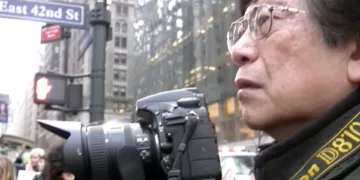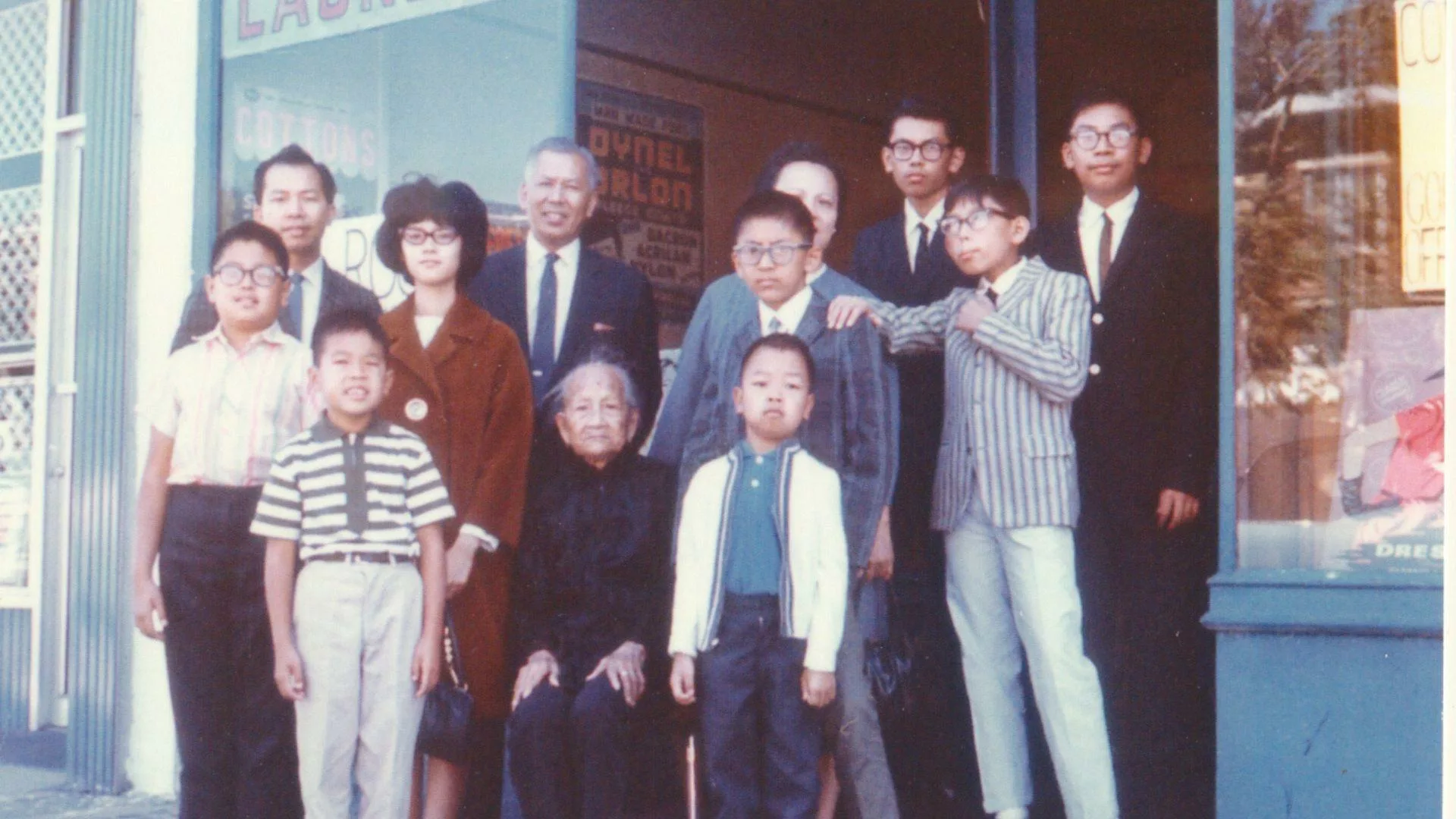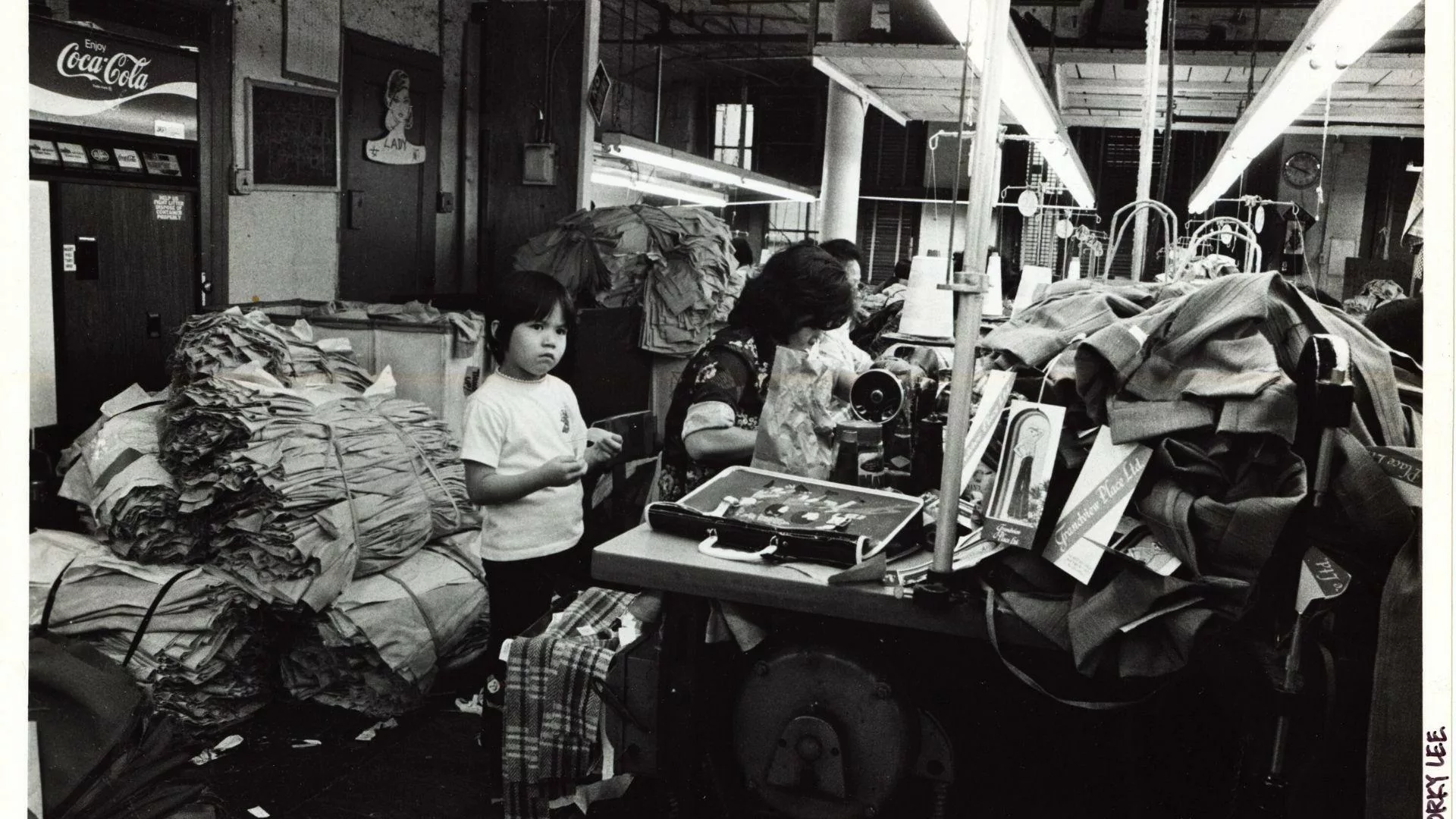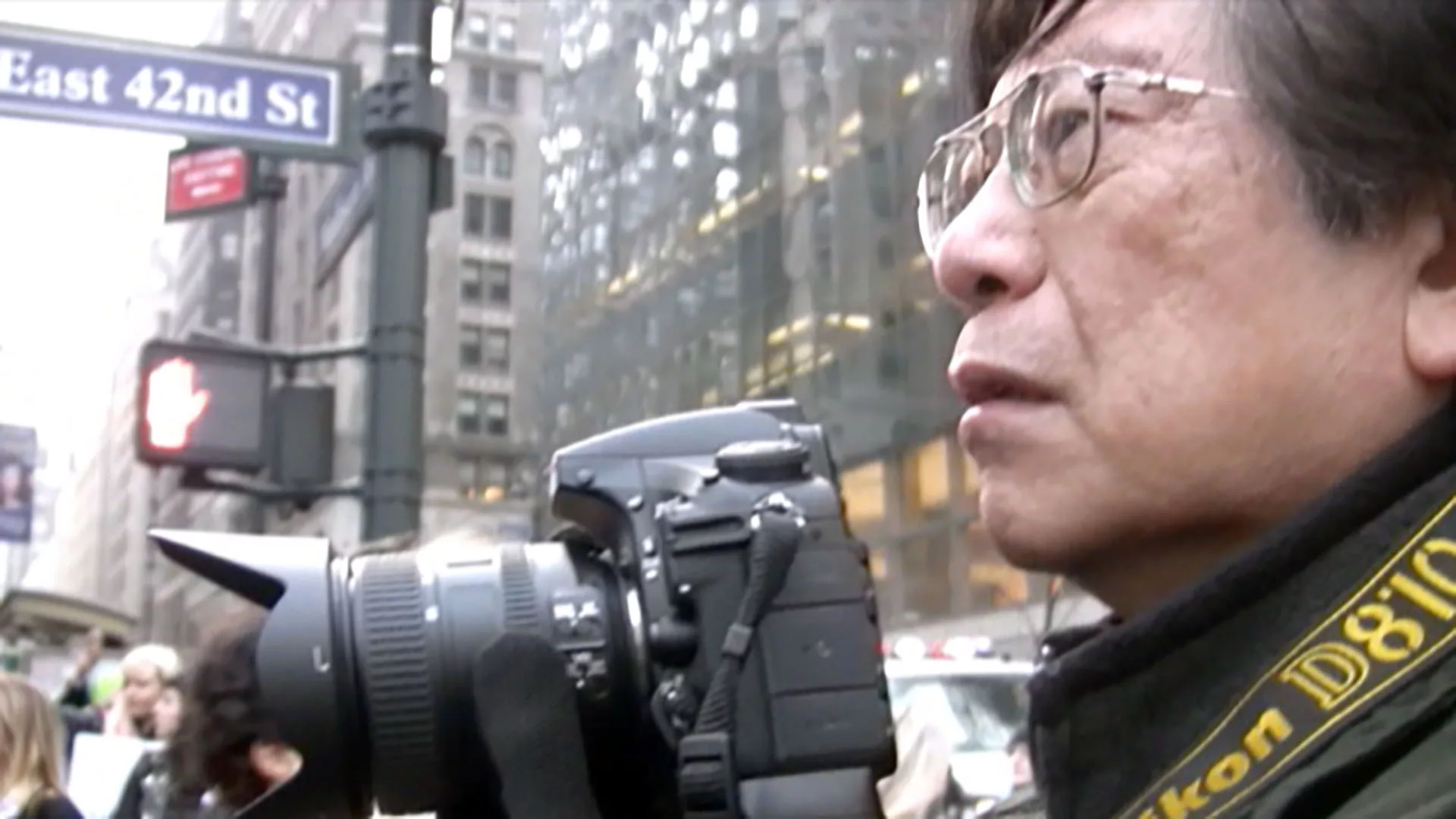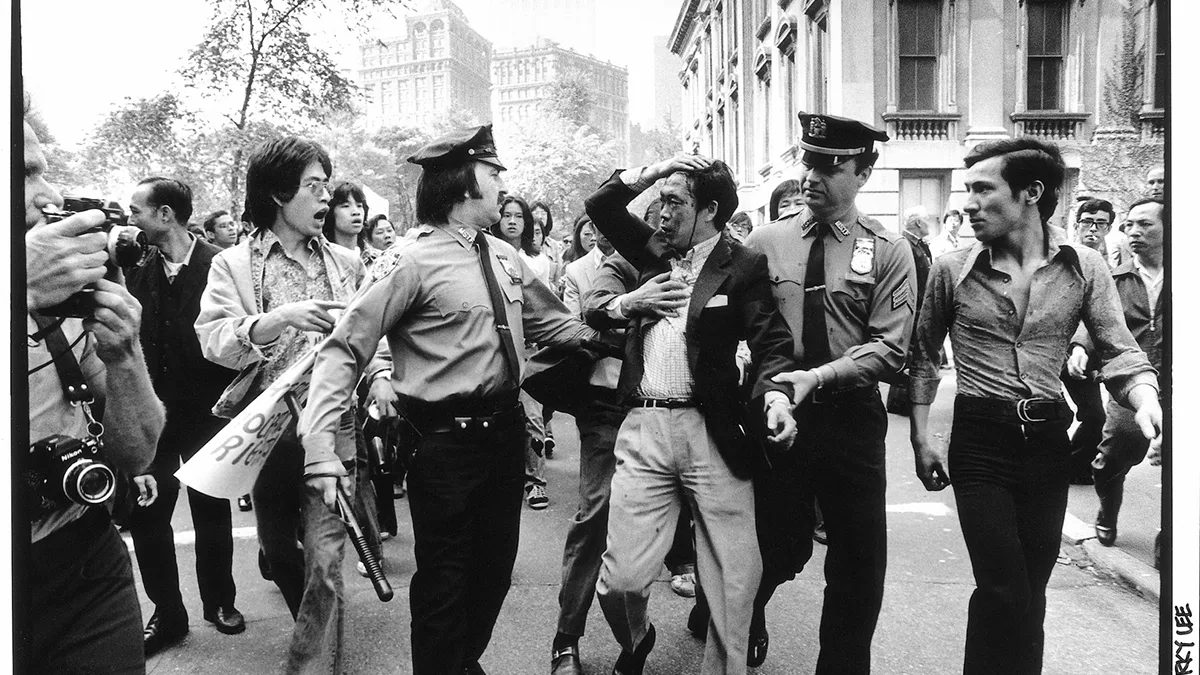Corky Lee used his camera to shine a light on communities often left in the shadows of history. As a Chinese American photographer born in 1947 in New York, he documented the lives and struggles of Asian Americans across five decades, determined to ensure their stories were seen and heard. Photographic Justice tells the epic tale of Lee’s lifelong crusade, following his inspiring journey from earnest amateur to renowned advocate through archive footage and intimate interviews.
Directed by Jennifer Takaki over 18 years, the film offers a uniquely intimate portrait of what drove Lee to dedicate his life to amplifying overlooked voices. More than just a recounting of one man’s career, it serves as an impactful reminder of how personal stories, when shared, can help shape broader cultural understandings. From witnessing police brutality in his neighborhood in the 1970s to revising omissions in historical images decades later, Lee relentlessly used his craft to strengthen representation and fight injustice.
While Lee sadly passed away in 2021, photographic justice ensures the communities and causes close to his heart continue to find new champions. By celebrating this unsung hero’s indomitable spirit, the film shines needed light on those whose dedication still moves us forward—one photograph at a time.
Capturing Community Through A Lens
Corky Lee grew up in New York’s thriving Chinatown in the 1940s as the child of Chinese immigrants. From a young age, he connected with his community and saw photography as a way to shed light on the lives and struggles often obscured. In 1975, everything changed when his photo of a police brutality incident sparked protests.
This pivotal moment spurred Corky into action. For over five decades, his lens documented Asian American communities across the country with courage and care. In New York, he bore witness to brutality, housing issues, and cultural celebrations that strengthened bonds. His images preserved both grand parades and intimate moments alike.
Two photos stand out that helped communities claim their rightful place in history. One captured an officer assaulting Peter Yew, which galvanized change. The other reshaped how we see the transcontinental railroad’s construction, as Chinese workers were previously left out. By gathering their descendants, Corky ensured all contributions were recognized.
Wherever Asian Americans faced challenges, you could find Corky with his camera to amplify marginalized voices. His advocacy was a lifelong journey, yet one biography alone could never contain all he captured. Through Corky’s photos, communities are granted visibility that will shape understanding for generations to come.
A Labor of Love: Jennifer Takaki’s Directorial Vision
When filmmaker Jennifer Takaki first met Corky Lee in 2003, little did she know it would lead to an 18-year odyssey. Captivated by his dedication to advocating through photography, she felt compelled to follow him. What began as casual filming grew into an intimate portrait of this unsung hero.
Over nearly two decades, Takaki bore patient witness to Corky’s relentless work across communities and crusades. Her glimpses into his personal sacrifices reveal the true costs of such commitment. Through careful restoration of archival content too, Corky’s story vibrantly springs to life. We see firsthand his unwavering spirit, strengthening representation one image at a time.
By curating personal anecdotes alongside Corky’s impactful photos, Takaki offers important historical context. Yet her greatest triumph lies in preserving Corky’s enduring humanity. This film brings a heightened understanding of what drives certain souls to dedicate their lives’ work to others. Though Corky has left us, through Takaki’s devoted cinematic labor of love, his memory and message live on.
Honoring Hidden Voices
Corky Lee devoted his life to ensuring marginalized communities were visible in the story we tell of America. Through his photographs, he rescued those in danger of fading from history’s pages. Although Corky has now passed, his legacy lives on in the waves of understanding his work continues to create.
This film ensures Corky’s mission carries forth. By sharing his life’s work combating injustice through imagery, more eyes will be opened to the challenges faced by so many unseen faces. As renewed anti-Asian rhetoric took hold during the pandemic, his portraits rang with added poignancy—a reminder of prejudices that plague us still if left unconfronted.
By acknowledging those once obscured, we approach truer knowledge. In bringing Asian American voices back into our shared chronicle, Corky empowered generations to own their rightful role in our nation’s narrative. He proved that a single, determined person, armed with compassion, can reshape perspectives by granting visibility to others’ truths.
While no film could fully contain Corky’s expansive contributions, this tribute preserves his example for future storytellers. In honoring the quiet heroes who challenge narrow views of “history,” we take steps toward an inclusive future. Corky’s impact will echo through a more representative understanding of our complex, communal experiences.
Sharing Corky’s Story With The World
Photographic Justice received a powerful homecoming during its Firehouse DCTV Cinema premiere in New York’s Chinatown. With Corky having close ties to the community, it’s fitting that many who knew him were able to celebrate his legacy. Word spread quickly; by the weekend, most screenings were sold out.
This enthusiasm has followed the film across more screenings. After holding court in LA, a wider audience will discover Corky’s importance when it airs on PBS next month. I’m thrilled his story will find new viewers keen to learn from lives of quiet dedication.
If given the chance, do make a point of seeing this moving documentary biography. Director Jennifer Takaki has succeeded honorably in bringing Corky’s journey to life. Her intimate portrait does justice to his immense, lifelong contributions to confronting injustice through imagery alone.
Rotating festival schedules mean opportunities may not last. But wherever Photographic Justice screens near you in the future, I guarantee its educational and inspirational messages will stay long after. This film deserves the widest possible reach to keep Corky’s memory burning bright.
Honoring a Life of Commitment
Through her portrait of Corky Lee, director Jennifer Takaki has shed light on a life devoted to advocacy through imagery. We witness how Corky’s camera was much more than a tool—it was a weapon in his tireless campaign for representation.
Though Corky may no longer be with us, Photographic Justice ensures his mission carries on by sharing his story with new eyes. In bringing to light those whose voices were silenced and confronting prejudices that sought to erase entire communities, Corky left an impact that will echo for generations.
This film reinforces Corky’s immortal legacy as not merely a gifted photographer but as a fierce champion fighting to weave marginalized groups into America’s tapestry. Even when faced with opposition, he stayed committed to empowering others through visibility alone.
In celebrating Corky and all he worked to honor, this documentary stands as a most deserving homage. It reminds us that one individual, bound by compassion, can help reshape societal perspectives through their contributions. Corky’s light continues to burn and guide us towards informed understanding and inclusive justice.
The Review
Photographic Justice: The Corky Lee Story
In summary, Photographic Justice: The Corky Lee Story is a moving and illuminating tribute to an unsung hero of the Asian-American experience. Director Jennifer Takaki has deftly captured both the professional accomplishments and personal sacrifices of her subject through intimate interviews and restored archive footage. While Lee may be gone, this film ensures his legacy of using photography as a tool for advocacy and empowerment lives on.
PROS
- Provides valuable historical context about the Asian American experience through Lee's photographs.
- Intimate portrayal of Lee's lifelong commitment to advocacy and representing underserved communities
- Archival footage and interviews bring Lee's journey and mission to life.
- Sheds light on an influential figure whose contributions deserve wider recognition.
CONS
- May not offer new insights for those already familiar with Lee and his work.
- Focuses primarily on Lee without exploring broader contexts around his activism.
- A runtime of 85 minutes limits how much depth can be provided.
